Indian rescuers pull out 41 workers trapped in tunnel after 17 days
Indian rescuers on Tuesday pulled out all 41 men trapped in a collapsed road tunnel after laying the final section of pipe in the culmination of a marathon 17-day operation, the road transport and highways minister said.
“I am completely relieved and happy as 41 trapped labourers in the Silkyara Tunnel Collapse have been successfully rescued,” Nitin Gadkari said in a post on X, erstwhile Twitter.
Rescue teams were seen in photos on social media smiling and flashing victory signs as the drilling ended through the tonnes of earth, concrete and rubble that had been blocking the workers’ escape.
Stretchers have been specially fitted with wheels to pull the exhausted men out through 57 metres (187 feet) of steel pipe.
“This was a well-coordinated effort by multiple agencies, marking one of the most significant rescue operations in recent years,” the minister said as he appreciated the coordinated efforts of various departments and agencies.
“Tireless and sincere efforts by everyone, coupled with prayers from all, have made this operation possible. The dedicated endeavors of the rescue teams have yielded favorable results.”
He thanked rescue workers and international rescue experts, administrative officers, and the Uttarakhand government for their response.
In a video statement, he said the incident has taught the country a lot as the government decided to conduct a safety audit of the tunnel. The use of modern technology was also on the cards, he added.
He acknowledged that it was difficult to work in the mountainous area, but stressed the need for taking out some solution to address the issue.
Gadkari vowed to find a solution and congratulated the families of the 41 workers trapped in the tunnel.
Rescuers on verge of bringing 41 trapped in tunnel out
Ambulances moved towards the mouth of the tunnel entrance, preparing to receive the men who have been trapped since a portion of the under-construction tunnel in the Himalayan state of Uttarakhand collapsed.
“The work of laying pipes in the tunnel to take out the workers has been completed,” chief minister of Uttarakhand state Pushkar Singh Dhami said, adding they would be brought out of the tunnel “soon”.
“We are thankful to God and the rescuers who worked hard to save them,” Naiyer Ahmad told AFP, whose younger brother Sabah Ahmad is among the trapped workers, and who has been camping at the site for over two weeks.
Sudhansu Shah, who has also been camping out since shortly after the November 12 tunnel collapse waiting for his younger brother Sonu Shah, said relatives had started to celebrate.
“We are really hopeful and happy,” he said.
‘Effort and sacrifice’
Dhami praised the “prayers of tens of millions of countrymen and the tireless work of all the rescue teams engaged in the rescue operation”.
The health of the workers was “fine”, but a team of medics in a field hospital were ready on site as soon as they were brought out, he added.
Previous hopes of reaching the men have been dashed by falling debris and the breakdown of multiple drilling machines, and the government has warned repeatedly of the “challenging Himalayan terrain”.
After repeated setbacks in the operation, military engineers and skilled miners dug the final section by hand using a so-called “rat-hole” technique, a three-person team working at the rock face inside a metal pipe, just wide enough for someone to squeeze through.
Indian billionaire Anand Mahindra paid tribute to the men at the rockface who squeezed into the narrow pipe to clear the rocks by hand.
“After all the sophisticated drilling equipment, it’s the humble ‘rathole miners’ who make the vital breakthrough,” Mahindra said on X, formerly Twitter.
“It’s a heartwarming reminder that at the end of the day, heroism is most often a case of individual effort and sacrifice.”
‘Playing cricket’
Last week, engineers working to drive a metal pipe horizontally through the 57 metres of rock and concrete ran into metal girders and construction vehicles buried in the rubble, snapping a giant earth-boring machine.
Rescuers brought in a superheated plasma cutter to slice through metal rods that repeatedly impeded progress.
A separate vertical shaft was also started from the forested hill above the tunnel, reaching more than halfway through the 89 metres needed to reach the stranded men, a risky route in an area that has already suffered a collapse.
Digging, blasting and drilling also took place from the far side of the road tunnel, a much longer third route estimated to be around 480 metres.
The workers were seen alive for the first time last week, peering into the lens of an endoscopic camera sent by rescuers down a thin pipe through which air, food, water and electricity are being delivered.
Though trapped, the workers have plenty of space in the tunnel, with the area inside 8.5 metres high and stretching about two kilometres in length.
Arnold Dix, president of the International Tunnelling and Underground Space Association, who is advising the rescue on site, told reporters the men were in good spirits, and that he had heard they had been “playing cricket”.
For the latest news, follow us on Twitter @Aaj_Urdu. We are also on Facebook, Instagram and YouTube.






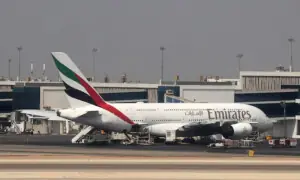


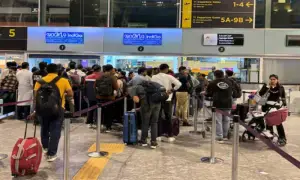

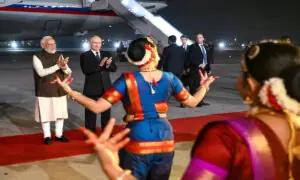



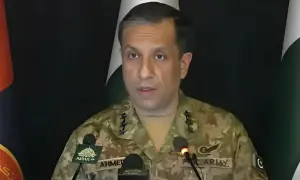




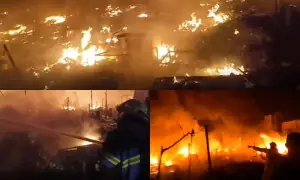

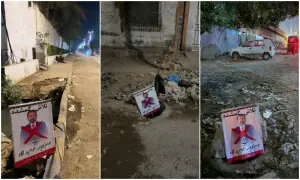

Comments are closed on this story.